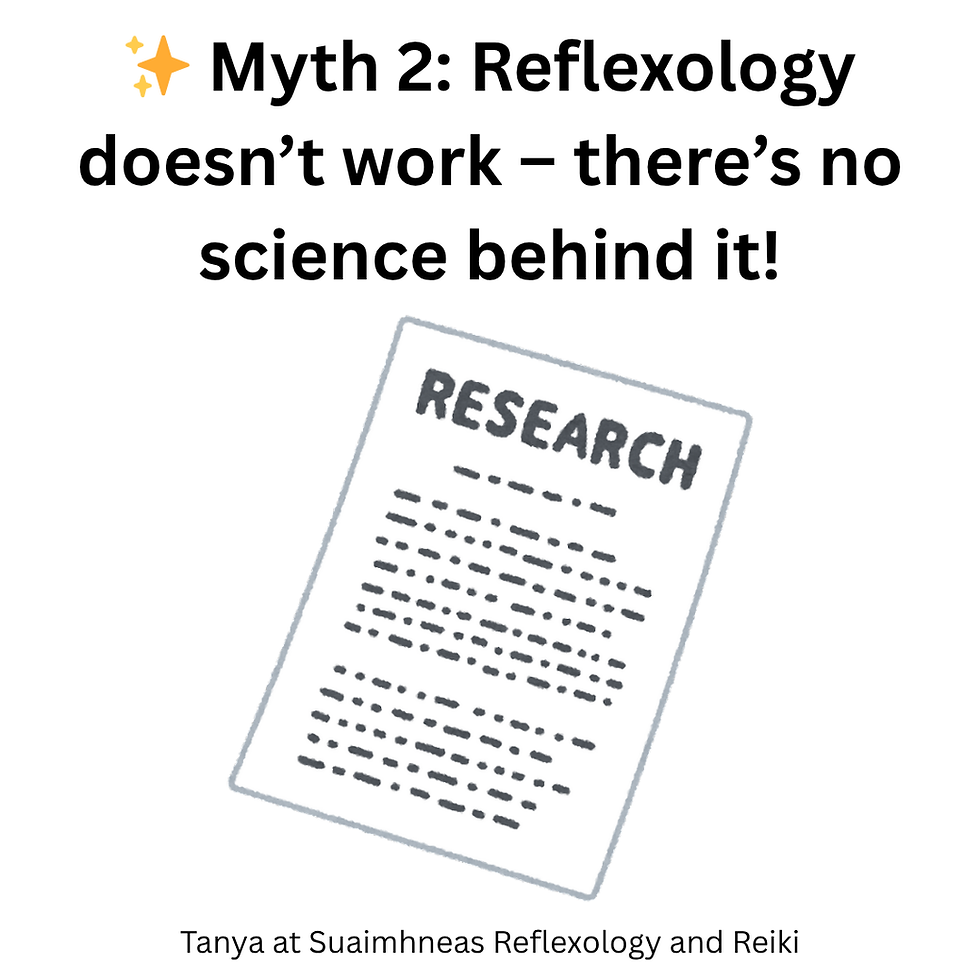🌿 Reflexology Myths – Let’s Bust Them Together!
- Tanya

- Aug 3
- 2 min read
Updated: Aug 7
One of the things I love most about my work as a reflexologist is helping people feel at ease with complementary therapies—and that often starts with clearing up some common myths. Whether someone is brand new to reflexology or a regular visitor, there are often lingering questions, hesitations, or things they’ve “heard” that can plant seeds of doubt.
So in this blog series, I’m going to explore 15 of the most common reflexology myths I’ve come across—gently busting them one by one to help you feel more informed, confident, and perhaps even a little curious about giving reflexology a try.
✨ Myth 1: Reflexology is too ticklish!
This is one of the most common concerns I hear when people are thinking about trying reflexology—and I completely understand why. Feet are often seen as a ticklish or sensitive part of the body, and the idea of someone working on them can make people feel a bit apprehensive.
But here’s the good news: reflexology shouldn’t tickle.
We use steady, purposeful pressure, not light or fluttery strokes that trigger the ticklish response. In fact, many people who describe themselves as extremely ticklish are surprised at how grounding and soothing reflexology feels.
It’s helpful to know that each foot contains over 200,000 nerve endings, all connected to the central nervous system. These nerve endings send messages to the brain and throughout the body, which is why foot reflexology can influence how we feel not just physically, but emotionally and energetically too.
The reason this matters is because these nerve endings are part of what makes reflexology effective—when activated with gentle but deliberate pressure, they stimulate the parasympathetic nervous system, which is responsible for rest, repair and relaxation. This is why reflexology is often described as calming, even for people who were initially nervous about their feet being touched.
🧠 A study published in the Journal of Korean Academy of Nursing (2006) found that foot reflexology significantly reduced anxiety and pain in post-operative patients, highlighting how the nervous system plays a key role in the effectiveness of treatment.
Another review in Complementary Therapies in Clinical Practice (2011) supports the idea that reflexology can positively affect the autonomic nervous system responses such as blood pressure, stress levels, and heart rate variability.
Of course, if any area feels particularly sensitive or “out of balance,” I always adapt the technique or pressure to keep you comfortable. It’s your session, and it’s my job to make sure you feel safe, grounded, and supported throughout.
If you’re still feeling unsure, why not start with a short taster session? It’s a lovely way to experience the touch of reflexology without committing to a full treatment, and it often helps ease those early concerns.
Your feet might surprise you—in the best way 💜
Tanya x



